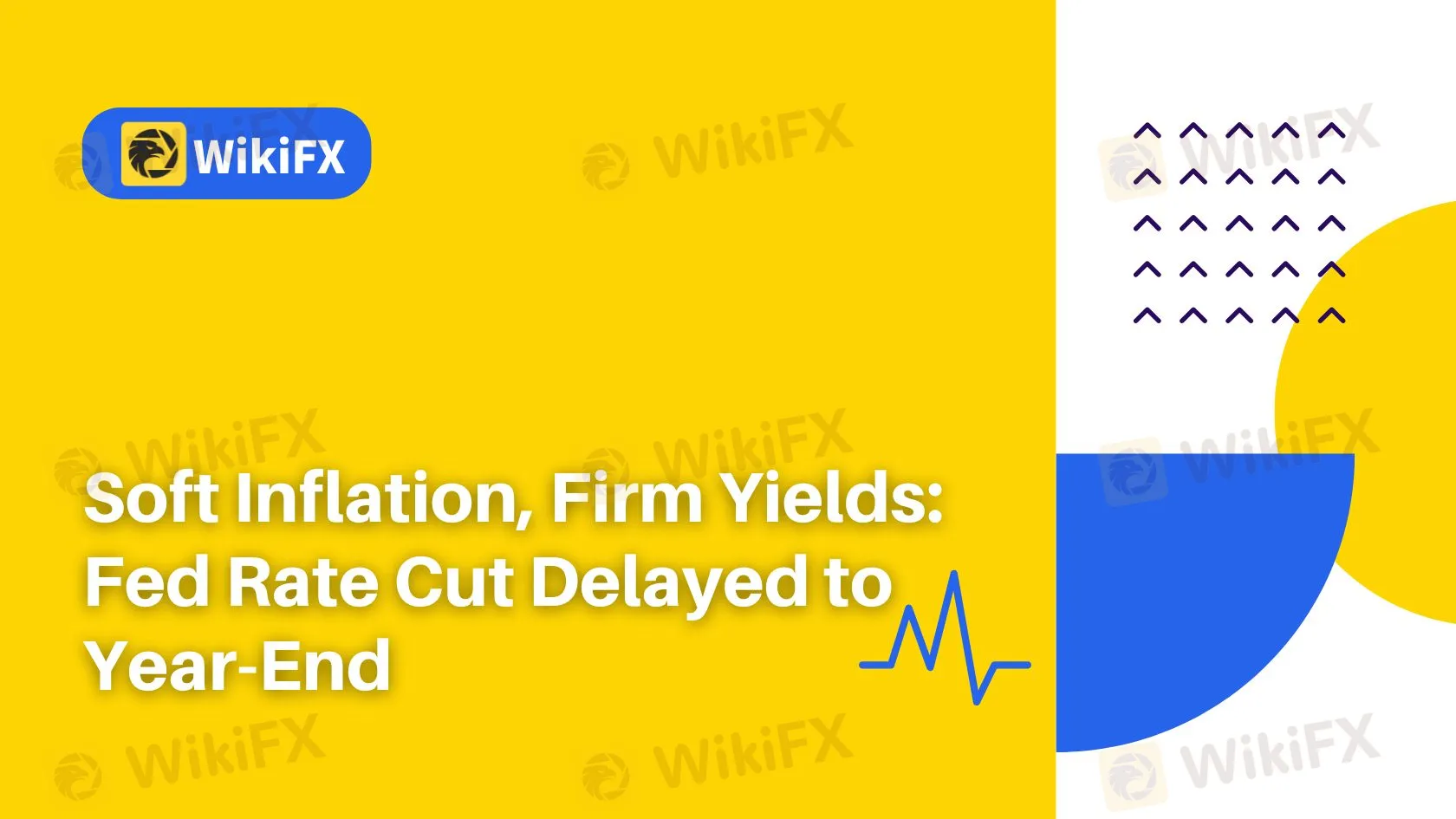Soft Inflation, Firm Yields: Fed Rate Cut Delayed to Year-End
Abstract:The U.S. bond market initially rallied on cooling inflation but lost steam as Wall Street bet on later rate cuts. Fed policy expectations now lean toward a December easing, dampening gold and boosting equities.

Recent movements in U.S. financial markets reflect growing uncertainty about the timing of Federal Reserve interest rate cuts, despite signs of easing inflation. While Aprils consumer price data offered some reassurance, investor attention has quickly turned to broader macroeconomic factors and their impact on monetary policy.
Mixed Reactions Across Asset Classes
Following the release of Aprils CPI, which came in below expectations, U.S. Treasury yields initially fell. The two-year yield dropped to 3.95% before rebounding to 4.02%, reflecting market hesitation. At the same time, equity markets rallied strongly, buoyed by optimism over improved global trade sentiment and a more stable inflation outlook.
However, the rally in risk assets led some investors to reduce their bond exposure, reversing earlier gains in Treasuries. Traders are weighing short-term optimism against the reality that any potential rate cuts may still be several months away. Current pricing in derivatives markets suggests two 25-basis-point cuts may occur before the end of 2025, though most forecasts now lean toward December.
Banks Push Back Rate Cut Timelines
Several major financial institutions have recently updated their predictions for Federal Reserve policy. Goldman Sachs, JPMorgan Chase, Barclays, and Citigroup have all shifted their expected timing for the next rate cut from mid-2025 to the final quarter of the year. These changes reflect a more cautious approach, factoring in stronger-than-expected employment data and signs of improving growth projections.
At the same time, longer-term bond yields have risen, with 10- and 30-year maturities seeing notable increases. In the options market, positioning has also started to reflect expectations for higher yields over time, signaling that many investors do not yet anticipate an aggressive easing cycle.
Inflation Outlook Remains Uncertain
While the softer April CPI print eased immediate fears, analysts caution that inflationary risks still exist. Inventory overhangs in some sectors may be keeping prices temporarily low, but future supply chain or demand shocks could revive upward pressure on costs. Traders will closely watch upcoming inflation and labor market data, including PCE readings and employment reports, for further direction.
Some observers believe inflation could trend higher again in 2026 if fiscal stimulus efforts pick up. However, the current moderation in price growth, coupled with stable consumer spending, has helped ease immediate pressure on the Fed to act quickly.
Financial Conditions Support Broader Risk Appetite
The recent improvement in financial conditions has fueled renewed interest in corporate bonds and other higher-yielding instruments. Issuance of investment-grade debt has increased, signaling greater investor willingness to take on risk. Meanwhile, the U.S. dollar index weakened slightly, adding to support for equities and commodities.
This shifting environment has also influenced sentiment in alternative assets. With lower rates potentially on the horizon later in the year, some market participants anticipate that assets like gold and cryptocurrencies may benefit from renewed capital inflows, particularly if liquidity conditions ease.
Looking Ahead
Investors now face a complex landscape where inflation is slowing but not fully under control, and where policy decisions may hinge on data trends over the next several months. Market volatility may persist as traders assess incoming economic reports and adjust their expectations for interest rates accordingly.
While hopes for immediate rate cuts have faded, the broader narrative remains: monetary policy may turn more accommodative—just not yet. Until then, the path forward for bonds, equities, and digital assets will remain highly sensitive to evolving data and market sentiment.
Read more

Interactive Brokers Adds Ping An of China ETF to No-Fee Program
Interactive Brokers now includes Ping An of China CSI HK Dividend ETF in its no-transaction-fee program, offering investors low-cost access to Hong Kong’s top dividend-paying stocks.

Judge Reviews Sanctions Against CFTC in My Forex Funds Fraud Case
A New Jersey judge reviews sanctions against the CFTC after a special master accused the agency of bad faith in its fraud case against My Forex Funds and CEO Kazmi.

Plus500 Q1 2025: Strong Growth Amid Trade War, Mehta Acquisition
Plus500 excels in Q1 2025 with 13% revenue growth, driven by trade war volatility and Mehta Equities acquisition. Full-year results to surpass expectations.

Plus500 Review 2025: Trusted CFD Broker with Top Features Unveiled
Plus500 Review 2025: Explore a trusted CFD trading platform with 2,800+ instruments, top-tier regulation, and user-friendly features. Ideal for beginners and pros.
WikiFX Broker
Latest News
Short-Term Pressure Mounts on Gold as Risk Sentiment Improves
How Will the U.S.-China Trade Deal Affect the Dollar and Global Markets?
Radiant DAO Proposes Compensation Plan for Wallet Losses
BitGo Secures MiCA License, Expands Crypto Services Across the EU
Big Changes at Saxo Bank: What Traders and Partners Need to Know
Traders Warned to Stay Alert Amid Growing Exposures for INGOT Brokers
WELTRADE's transformation from Reliable to a Problematic Broker
WikiFX “Elite’s View on the Challenge: Dialogue with Global Investment Leaders” Concludes Successful
Plus500 Review 2025: Trusted CFD Broker with Top Features Unveiled
Plus500 Q1 2025: Strong Growth Amid Trade War, Mehta Acquisition
Rate Calc
